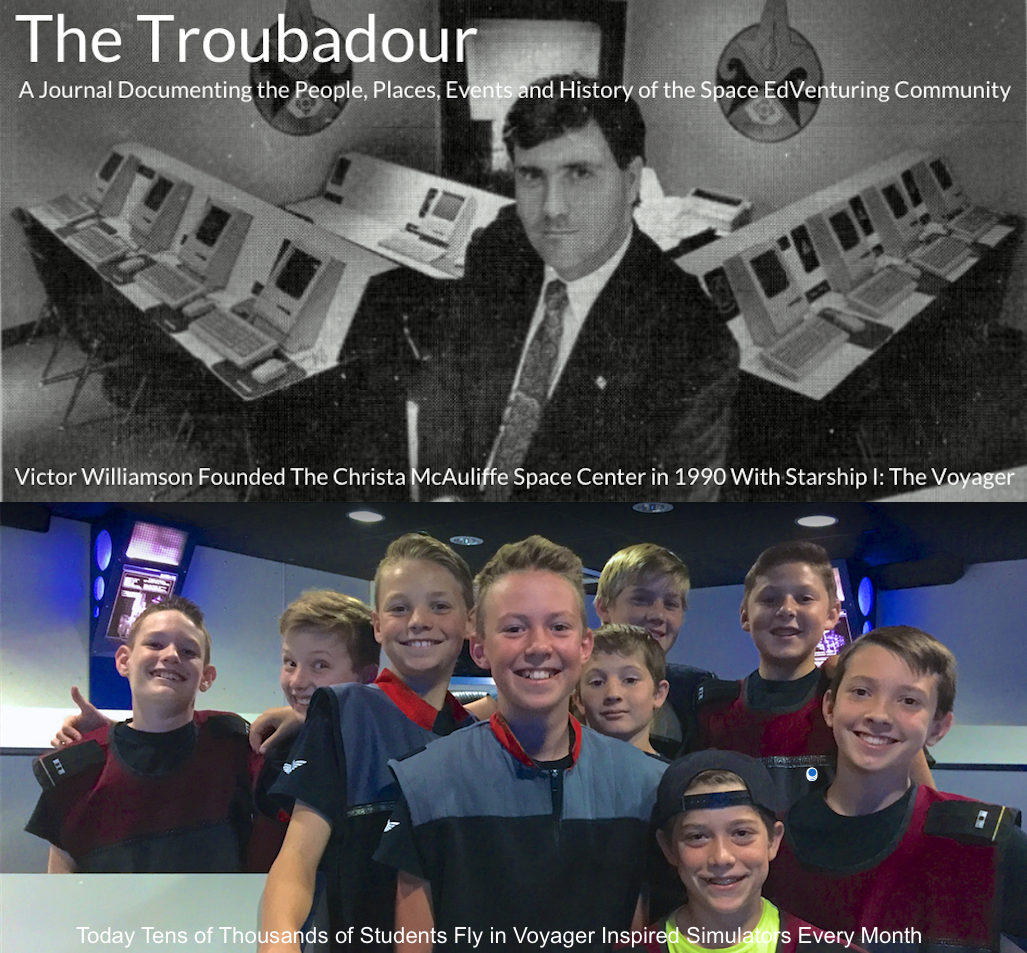Farpoint Educator Prepares New Book for Publication
Aleta Clegg was the curriculum supervisor for the Christa McAuliffe Space Education Center. She currently is working towards a masters degree at BYU and working with me to create Farpoint Station's educational division.
Mr. Williamson

Human Brain: Amazing Facts
from Binscorner.com
Crystal brain cell
If you’re preparing for a quiz show and need to brush up on your knowledge of the human brain - or if you just have a love of learning - look no further, because we’ve gathered up a list of some of the best brain facts on the planet. Amongst other things, you’ll learn why babies’ heads are so darned big, why a healthy lunch is good for your body and your brain, why happy thoughts will keep the doctor away and why your lover’s cologne makes your heart skip a beat.
Check out our list, and if you’ve got more cool and interesting facts to add, please leave a comment!

Image: Gaetan Lee
Fast Brain Facts
- 3 = the weight of your brain in pounds
- 4 to 6 = the number of minutes your brain can survive without oxygen before it starts to die
- 8 to 10 = the number of seconds you have before losing consciousness due to blood loss
- 10 to 23 = the number of watts of power your grain generates when you’re awake (that’s enough to turn on a light bulb!)
- 20 = the percentages of oxygen and blood flow going to the brain
- 100,000 = the number of miles of blood vessels in your brain
- 1,000 to 10,000 = the number of synapses for each neuron in your brain
- 100 billion = the number of neurons in your brain

Image: Michael Heilemann
Baby Brains
- Each person has about the same number of brain cells at birth as in adulthood, but those cells grow, reaching maximum size at about age six.
- A newborn’s brain triples its size in the first year of life (no wonder babies have such big heads!).
- The sense of touch is the first sense to develop in a fetus, with the lips and cheeks experiencing this sensation at eight weeks.
- Keep exercising your brain, because mental activity stimulates the creation of new neurons throughout your whole life.

Image: Ctrldata
An Apple a Day
- Think positive because when you do, you’ll keep the doctor away: Studies show that 50-70% of visits to the doctor for physical ailments can be traced to psychological reasons.
-
Eat well, and it’ll have positive effects on your brain, because a
study of one million New York students showed that those who ate
lunches
without additives such as artificial flavours, preservatives and dyes performed 14% better in IQ tests.
- That being said, your brain is the most fatty organ in your body!

Image: mbgrigby
The Memory Game
- New connections are created each and every time you remember something or have a new thought.
- Stronger, more intense emotional connections are linked to memories prompted by scent.
- Memories triggered by scent (like cologne) have a stronger emotional connection, and therefore appear more intense than other memory triggers.
- Cherish your sleep because that’s probably the best time for your brain to file away all the memories of the day.

I
mage: Erik Mallinson
Things That Make You Go “Hmmm…”
- It’s not your brain that’s hurting when you get a headache – without pain receptors, your brain can’t feel any pain.
- Your brain knows when you tickle yourself, which is why you don’t bend over laughing.
- Supertasters have a super power that enables them to sometimes taste flavours that others can’t detect; they have more taste buds and a brain that’s more sensitive to tastes of foods and drinks.
- When you sleep, you’re virtually paralyzed because your brain creates a hormone to prevent you from acting out your dreams.
- About 12% of people dream in black and white.
- It’s not true that humans only use 10% of their brains; each part of the brain has a purpose.

Image: jj_judes
What is Reality?
There is a strange and mysterious world that surrounds us, a world largely hidden from our senses. The quest to explain the true nature of reality is one of the great scientific detective stories. Clues have been pieced together from deep within the atom, from the event horizon of black holes, and from the far reaches of the cosmos. It may be that that we are part of a cosmic hologram, projected from the edge of the universe. Or that we exist in an infinity of parallel worlds. Your reality may never look quite the same again. Read more
The Imaginarium
Taking Ordinary To Extraordinary |
| Something to do when you're bored in the office |
 |
| They're getting older and older |
 |
| An example of pure imagination. I think Nicholas will get the job. |
 |
| An outdoor stage in Austria |
 |
| All the pages are blank |
 |
| Shocking! We've been lied to all these years. |
 |
| Watch ring. |
 |
| All Legos |

























































